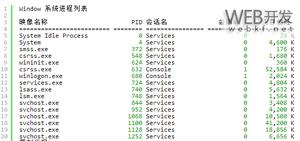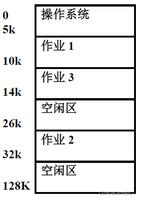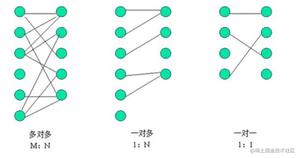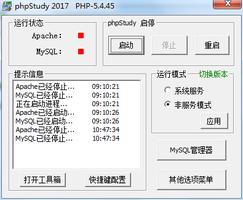MIT6.828——Lab1partB(麻省理工操作系统课程实验)

Lab1
历时2天,完成了LAB1,完整代码仓库可点击:https://github.com/Elio-yang/MIT6.828
partA 练习
- exercise3
gdb指令:
x/Ni addr :反汇编addr处的N条指令
x/Nx addr:打印N字节addr处的内存
b *addr:在addr处设置断点
readsect(): 0x7c7c
bootmain():0x7d25
循环结束的第一条指令是0x7d81处的call *0x10018,利用gdb,0x10018内存处的值为0x10000c,故第一条指令是call 0x10000c。这个地址就是kernel的entry。
At what point does the processor start executing 32-bit code? What exactly causes the switch from 16- to 32-bit mode?
从ljmp $PROT_MODE_CSEG,$protcseg这条指令后开始执行32位代码。真正造成切换的,是CR0的PE位被置为,进入了保护模式。
What is the last instruction of the boot loader executed, and what is the first instruction of the kernel it just loaded?
last:
call *0x10018first:
f010000c <entry>:f010000c: 66 c7 05 72 04 00 00 movw $0x1234,0x472
Where is the first instruction of the kernel?
很显然在0x10000c。
How does the boot loader decide how many sectors it must read in order to fetch the entire kernel from disk? Where does it find this information?
都是通过ELF header得知的。
Loading the kernel
第一个需要注意的是代码的链接地址和装载地址
使用命令
objdump -h <file.o># -x Display all available header information
# -f Display entry point
# 更多用法 man objdump 即可
在kernel中这两者是不同的,但是在之前的boot中
二者是一致的。在kern/entry.S中有这样一段代码
# Turn on paging.movl %cr0, %eax
orl $(CR0_PE|CR0_PG|CR0_WP), %eax
movl %eax, %cr0
这便开启了地址映射,在此之前kernel的VMA和LMA地址处的内存一般是不同的,但是开启分页之后,LMA映射到了VMA。
The Kernel
第一个值得注意的是:开启分页模式,将虚拟地址[0, 4MB)映射到物理地址[0, 4MB),[0xF0000000, 0xF0000000+4MB)映射到[0, 4MB)(/kern/entry.S)
分页模式下的寻址,在Intel手册中也有给出
开启这个模式的代码如下
# Load the physical address of entry_pgdir into cr3. entry_pgdir# is defined in entrypgdir.c.
movl $(RELOC(entry_pgdir)), %eax
movl %eax, %cr3
# Turn on paging.
movl %cr0, %eax
orl $(CR0_PE|CR0_PG|CR0_WP), %eax
movl %eax, %cr0
关于地址的映射在kern/entrypgdir.c有代码实现
__attribute__((__aligned__(PGSIZE)))pde_t entry_pgdir[NPDENTRIES] = {
// Map VA"s [0, 4MB) to PA"s [0, 4MB)
[0]
= ((uintptr_t)entry_pgtable - KERNBASE) + PTE_P,
// Map VA"s [KERNBASE, KERNBASE+4MB) to PA"s [0, 4MB)
[KERNBASE>>PDXSHIFT]
= ((uintptr_t)entry_pgtable - KERNBASE) + PTE_P + PTE_W
};
编译器分配的空间是强制性4kB页对齐的。pgdir是一个1024项的数组。这里可以不用详细了解原理For now, you don"t have to understand the details of how this works, just the effect that it accomplishes.
- exercise7
在开启分页之前,这两个地址内容是不一致的,后面经过了地址映射,这两者的内容一致。注释掉
movl %eax, %cr0程序会崩溃。
Formated Printing to the Console
首先是几个函数的调用关系
然后练习题
- exercise8
这个文件就是lib/printfmt.c
// (unsigned) octalcase "o":
// Replace this with your code.
num=getuint(&ap,lflag);
base=8;
goto number;
对照上下文很容易补全。
下面是回答问题:
Explain the interface between
printf.candconsole.c. Specifically, what function doesconsole.cexport? How is this function used byprintf.c?
对照上文调用关系图即可
Explain the following from console.c
if (crt_pos >= CRT_SIZE) {int i;
memmove(crt_buf, crt_buf + CRT_COLS, (CRT_SIZE - CRT_COLS) *sizeof(uint16_t));
for (i = CRT_SIZE - CRT_COLS; i < CRT_SIZE; i++)
crt_buf[i] = 0x0700 | " ";
crt_pos -= CRT_COLS;
}
首先文本模式最多能显示25*80个字符,即25行每行80个。此处
// console.h#define CRT_ROWS 25
#define CRT_COLS 80
#define CRT_SIZE (CRT_ROWS * CRT_COLS)
因此,这一段处理的是超出一屏幕以后的做法:即舍弃最上面一行,整体上移一行。
For the following questions you might wish to consult the notes for Lecture 2. These notes cover GCC"s calling convention on the x86.
Trace the execution of the following code step-by-step:
int x = 1, y = 3, z = 4;cprintf("x %d, y %x, z %d
", x, y, z);
- In the call to
cprintf(), to what doesfmtpoint? To what doesappoint?- List (in order of execution) each call to
cons_putc,va_arg, andvcprintf. Forcons_putc, list its argument as well. Forva_arg, list whatappoints to before and after the call. Forvcprintflist the values of its two arguments.
GCC 函数调用约定是参数从右往左入栈。此处fmt指向的就是第一个参数的位置。而ap指向第一个可变参数,也就是第二个参数x的位置。关于变参数,JOS使用的是GCC builtin来实现的。其实现可以用如下代码进行大致说明(不是严谨的完整实现):
#define va_start(list,param_1st) ( list = (va_list)¶m1+ sizeof(param_1st) )#define va_arg(list,type) ( (type *) ( list += sizeof(type) ) )[-1]
#define va_end(list) ( list = (va_list)0 )
因此:
va_list:即char*
va_start:获取第一个可变参数的地址
va_arg:返回指向下一个参数的指针
va_end:清空参数列表
Run the following code.
unsigned int i = 0x00646c72;cprintf("H%x Wo%s", 57616, &i);
What is the output? Explain how this output is arrived at in the step-by-step manner of the previous exercise.
Here"s an ASCII tablethat maps bytes to characters.
The output depends on that fact that the x86 is little-endian. If the x86 were instead big-endian what would you set
ito in order to yield the same output? Would you need to change57616to a different value?Here"s a description of little- and big-endian and a more whimsical description.
把这段代码加入init.c中,运行make qemu,结果如下
0xe110=57616这很好解释,查阅ASCII表,得知
00() 64(d) 6c(l) 72(r)显然这是由于小端模式而使用的一个数。为了证明这一点,可以输出&i内存处的字节。将下面这段代码放在上面打印代码的后面
cprintf("addr of i: %p",&i);
char *p=(char*)&i;
for(int i=0;i<4;i++){
cprintf("[%x]",*p);
p++;
}
输出结果如下:
In the following code, what is going to be printed after
"y="? (note: the answer is not a specific value.) Why does this happen?cprintf("x=%d y=%d", 3);
运行结果如下
显然y的值并不一定固定,他就是把内存中那个位置的数拿来充当了第二个参数。
Let"s say that GCC changed its calling convention so that it pushed arguments on the stack in declaration order, so that the last argument is pushed last. How would you have to change
cprintfor its interface so that it would still be possible to pass it a variable number of arguments?
更改了入栈方式,相应地更改va_start和va_start即可。
The Stack
先看这个练习
- exercise9
在entry.S中可以找到如下代码
# where the stack is set.# Clear the frame pointer register (EBP)
# so that once we get into debugging C code,
# stack backtraces will be terminated properly.
movl $0x0,%ebp # nuke frame pointer
# Set the stack pointer
movl $(bootstacktop),%esp
# now to C code
call i386_init
利用gdb得知,movl $(bootstacktop),%esp会被编译为movl $0xf0110000,%esp。因此栈何时初始化,栈放在哪儿都清楚了。继续看代码
#################################################################### boot stack
###################################################################
.p2align PGSHIFT # force page alignment
.globl bootstack
bootstack:
.space KSTKSIZE
.globl bootstacktop
这便开辟了栈的大小,即32KB。栈由高地址向低地址增长。
下面,关于函数的调用过程,做一个总结,可以参考[CSAPP,p164]。
这是从课件ppt截取的两页
关于函数的调用,一般有如下的动作发生:
- 函数调用者(caller)将参数入栈,按照从右到左的顺序入栈
- call指令会自动将当前%eip(指向call的后面一条指令)入栈,ret指令将自动从栈中弹出该值到eip寄存器
- 被调用函数(callee)负责:将%ebp入栈,%esp的值赋给%ebp。
因此函数开头都会是类似的两条指令
push %ebpmov %esp,%ebp
因此整个调用链差不多可以描述成如下形式
来到下一个练习
- exercise10
每次call之后会干什么,上文已经分析了。至于每次递归入栈的字,伪代码可以表示为
push %eippush %ebp
push %esi
push %ebx
共计0x10B。
- exercise11
需要我们更改mom_backtrace()函数,达到的效果如下:
题目中已经说明,获得%ebp的函数就是read_ebp()。那么编码工作应该很好完成了(利用调用链中%ebp的链)
intmon_backtrace(int argc, char **argv, struct Trapframe *tf)
{
// Your code here.
uint32_t *ebp=(uint32_t*)read_ebp();
while(ebp!=NULL){
cprintf("ebp %8x eip %8x args %08x %08x %08x %08x %08x
",
ebp,ebp[1],ebp[2],ebp[3],ebp[4],ebp[5],ebp[6]);
ebp=(uint32_t *)(*ebp);
}
return 0;
}
运行结果如下
- exercise12
练习12的任务有三个:
- 搞清楚
__STAB_* - 添加命令
backtrace - 完善
mon_backtrace
任务一
根据提示,查看这几个文件,首先是
kernel.ld。.stab : {PROVIDE(__STAB_BEGIN__ = .);
*(.stab);
PROVIDE(__STAB_END__ = .);
BYTE(0) /* Force the linker to allocate space
for this section */
}
.stabstr : {
PROVIDE(__STABSTR_BEGIN__ = .);
*(.stabstr);
PROVIDE(__STABSTR_END__ = .);
BYTE(0) /* Force the linker to allocate space
for this section */
}
可以知道
.stab和.stabstr应该是两个段。接着
objdump -h obj/kern/kernel
然后是``objdump -G obj/kern/kernel``执行后面的操作以后,大致可以知道这是一个段,包含了调试信息(符号表)。细节可以不用太了解。接着找到``stab.h``,其中这两项便是后文编码寻找行号时需要的。下面开始任务二和三任务二
题目中提示了需要使用
debuginfo_eip,查找这个函数发现,他会将需要的信息存到类型为struct Eipdebuginfo的结构体中。查看该结构体定义(kern/kdebebug.h)// Debug information about a particular instruction pointerstruct Eipdebuginfo {
const char *eip_file; // Source code filename for EIP
int eip_line; // Source code linenumber for EIP
const char *eip_fn_name; // Name of function containing EIP
// - Note: not null terminated!
int eip_fn_namelen; // Length of function name
uintptr_t eip_fn_addr; // Address of start of function
int eip_fn_narg; // Number of function arguments
};
因此只需要使用
debuginfo_eip填充该结构体,再输出信息即可。static struct Command commands[] = {{ "help", "Display this list of commands", mon_help },
{ "kerninfo", "Display information about the kernel", mon_kerninfo },
{ "backtrace", "Show stack backtrace",mon_stacktrace}
};
//......
int
for_stack(int argc,char **argv,struct Trapframe *tf)
{
uint32_t *ebp=(uint32_t*)read_ebp();
while(ebp!=NULL){
struct Eipdebuginfo info;
uint32_t eip = ebp[1];
debuginfo_eip((int)eip, &info);
cprintf(" ebp %8x eip %8x args %08x %08x %08x %08x %08x
",
ebp,ebp[1],ebp[2],ebp[3],ebp[4],ebp[5],ebp[6]);
const char* filename=(&info)->eip_file;
int line = (&info)->eip_line;
const char * not_null_ter_fname=(&info)->eip_fn_name;
int offset = (int)(eip)-(int)((&info)->eip_fn_addr);
cprintf(" %s:%d: %.*s+%d
",filename,line,info.eip_fn_namelen,not_null_ter_fname,offset);
ebp=(uint32_t *)(*ebp);
}
return 0;
}
int
mon_stacktrace(int argc,char **argv,struct Trapframe *tf)
{
cprintf("Stack backtrace:
");
return for_stack(argc,argv,tf);
}
其中关于文件行号的查找实现,对照上下文就能实现,注意
N_SLINE这就是之前说stab时提到的一个有用的属性。// Search within [lline, rline] for the line number stab.// If found, set info->eip_line to the right line number.
// If not found, return -1.
//
// Hint:
// There"s a particular stabs type used for line numbers.
// Look at the STABS documentation and <inc/stab.h> to find
// which one.
// Your code here.
stab_binsearch(stabs, &lline, &rline, N_SLINE, addr);
if(lline<=rline){
info->eip_line=stabs[lline].n_desc;
}else{
return -1;
}
运行结果如下:
之后运行评分程序至此,Lab1完结。完整代码仓库可点击:https://github.com/Elio-yang/MIT6.828
以上是 MIT6.828——Lab1partB(麻省理工操作系统课程实验) 的全部内容, 来源链接: utcz.com/z/519964.html








